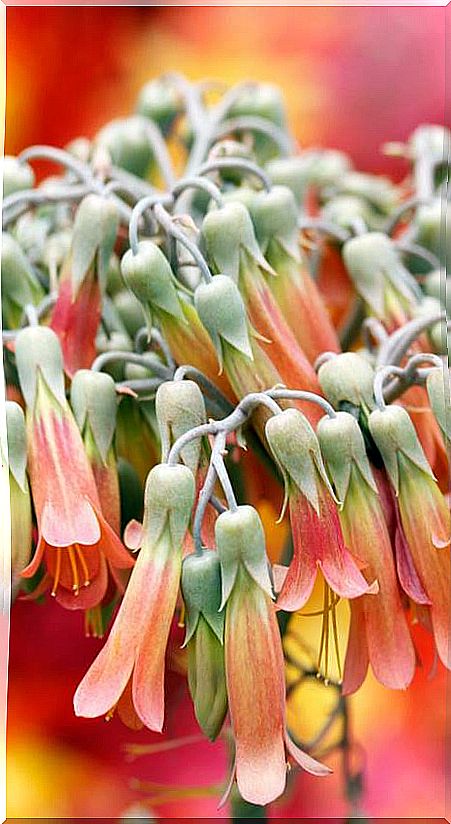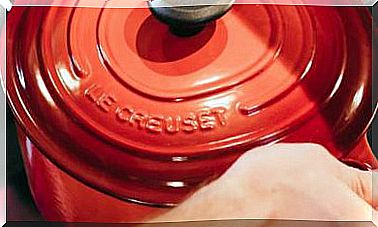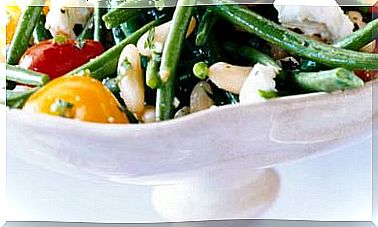Calanchoe: The Full Potential Of A Plant In Discord
Some species of calanchoe, in addition to being used as ornamental plants, have medicinal anti-inflammatory, re-epithelializing and antimicrobial properties.

No matter how inexperienced you may be in gardening, it is easy to have ever heard of the calanchoe, a succulent plant with around 125 species belonging to the crassulaceae family.
Also known as Bryophyllum, from the Greek bryon (bud) and phyllum (leaves), this name describes the abundance of seedlings that form on the margins of their leaves and that facilitate the birth of new plants (in fact, a leaf that detaches has the ability to root).
The word calanchoe comes from the Chinese kalan-chowl , and refers to something that falls and expands. The medicinal calanchoes are:
- The pinnata ( Bryophyllum pinnatum )
- The gastonis-bonnieri ( B. Gastonis-bonnieri )
- The daigremontiana ( B. Daigremontianum )
Large number of medicinal properties beyond cancer
Its medicinal properties have been known for centuries, especially in Mexico, Latin America and Africa. And it receives different names: weed witch, prodigious, leaf of the air or even “grass of Goethe”, because this poet, great fan of botany, was fascinated by its capacity to reproduce.
But its main bioactive components are cardiac glycosides and bufadienolides (bryophyllins), with the ability to affect the cardiovascular level. They also contain vitamins, mineral salts (magnesium, iron, calcium, copper, manganese), crassulaceous acid, tannins and polysaccharides.
Many indications are attributed to it: anti-inflammatory, antirheumatic, antimicrobial, antihistamine and re-epithelializing.
Its thick and fleshy leaves are the most used part. Its mucilaginous interior is used, a juice that may be reminiscent of the aloe parenchyma and that, like this one, is also intended to restore damaged skin tissues.
Externally
The curative indications of calanchoe in external use are numerous:
- Its juice protects and restores mucous membranes and fights skin infections.
- A juice is extracted from the leaves used to relieve scratches, burns, insect bites or as an effective antihistamine. It is applied as a poultice, plaster or by mixing the juice with olive oil, petroleum jelly or shea butter and massaging the affected area.
- Relieves and reduces inflammation in rheumatic processes, contractures and bruises.
- It is used as a venous tonic, in sitz baths, for varicose veins and phlebitis, best associated with other astringent plants, such as horse chestnut, or as a tincture with ascending massages.
- Due to its anti- hemorrhagic, astringent and anti-inflammatory power, it is used in dental or oral problems, stomatitis, glossitis and gingivitis. It is applied in rinses or mouthwashes.
Internally
As it contains cardiac glycosides, it is generally not advisable to take calanchoe for long periods or in high doses. It is safe in moderate doses.
- It acts as a digestive tonic and is helpful in relieving abdominal heaviness. Antiulcer effects are attributed to it, in stomach ulcers caused among other causes by medications.
- Due to its richness in mucilage, calanchoe juice is used for throat irritations and flu-like processes. It has a moderate antipyretic effect and is useful for allergic symptoms.
- An ethnopharmacological study has confirmed the traditional use of calanchoe species as a diuretic and for urine retention.
- A study conducted in Cameroon supports the efficacy of calanchoe pinnata in treating high blood pressure related to salt intake.
Anti-cancer properties
Along with these properties, calanchoe has a possible antitumor action that is being studied. According to María José Alonso, a member of the Barcelona College of Pharmacists, an investigation concluded that its bufadienolides could have some antitumor potential.
Other studies expose its cytotoxic capacity on cells from lymphoblastic leukemia, which would validate its chemopreventive and antitumor activity. In his book Kalanchoe, a natural alternative to chemotherapy (Ed. Obelisco), Adolfo Pérez argues that its isolated principles can enhance healthy cells in breast cancer and is an alternative to chemotherapy.
This article has been prepared with the advice of Josep Maria Teixé, herbalist at El Manantial de Salud.









